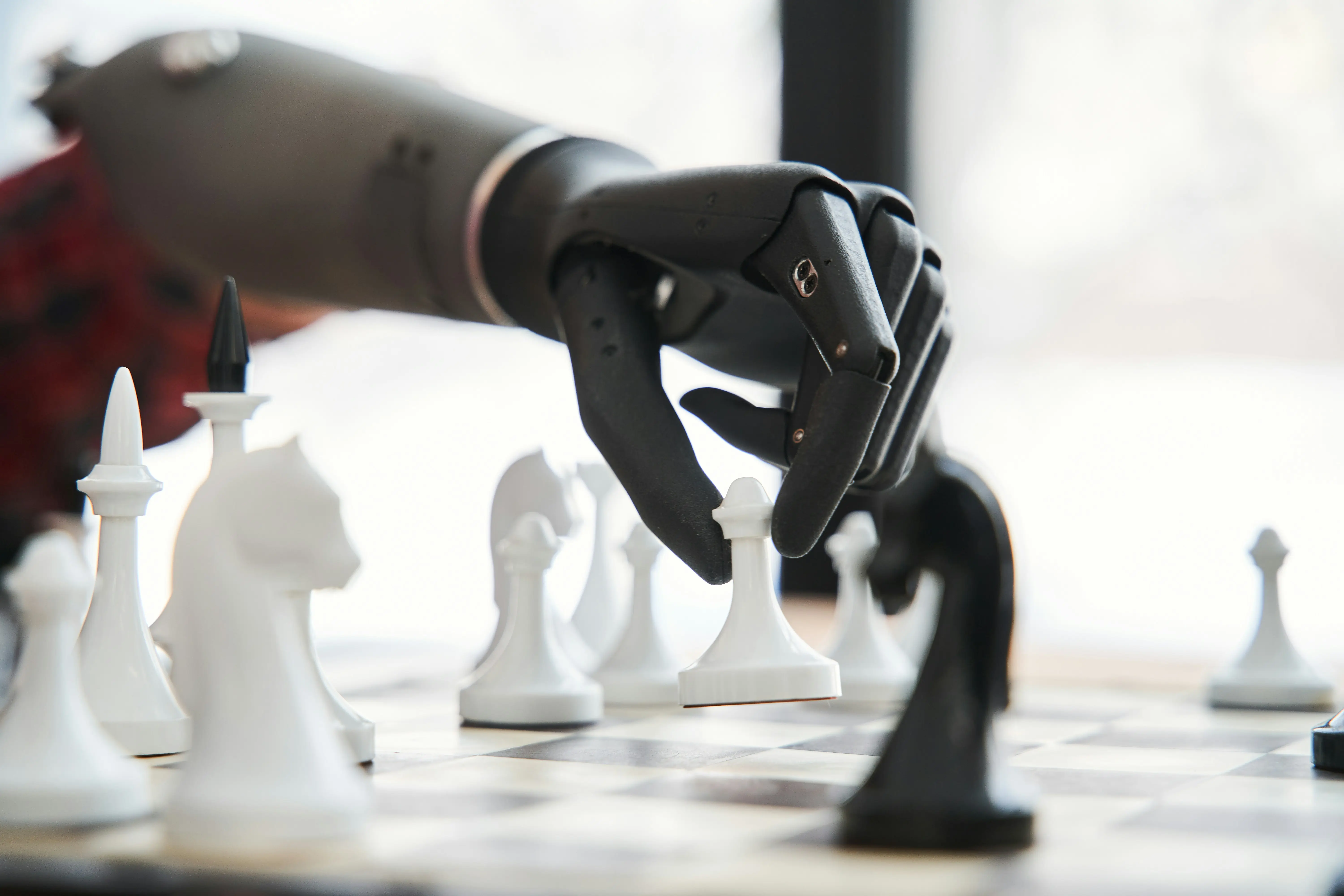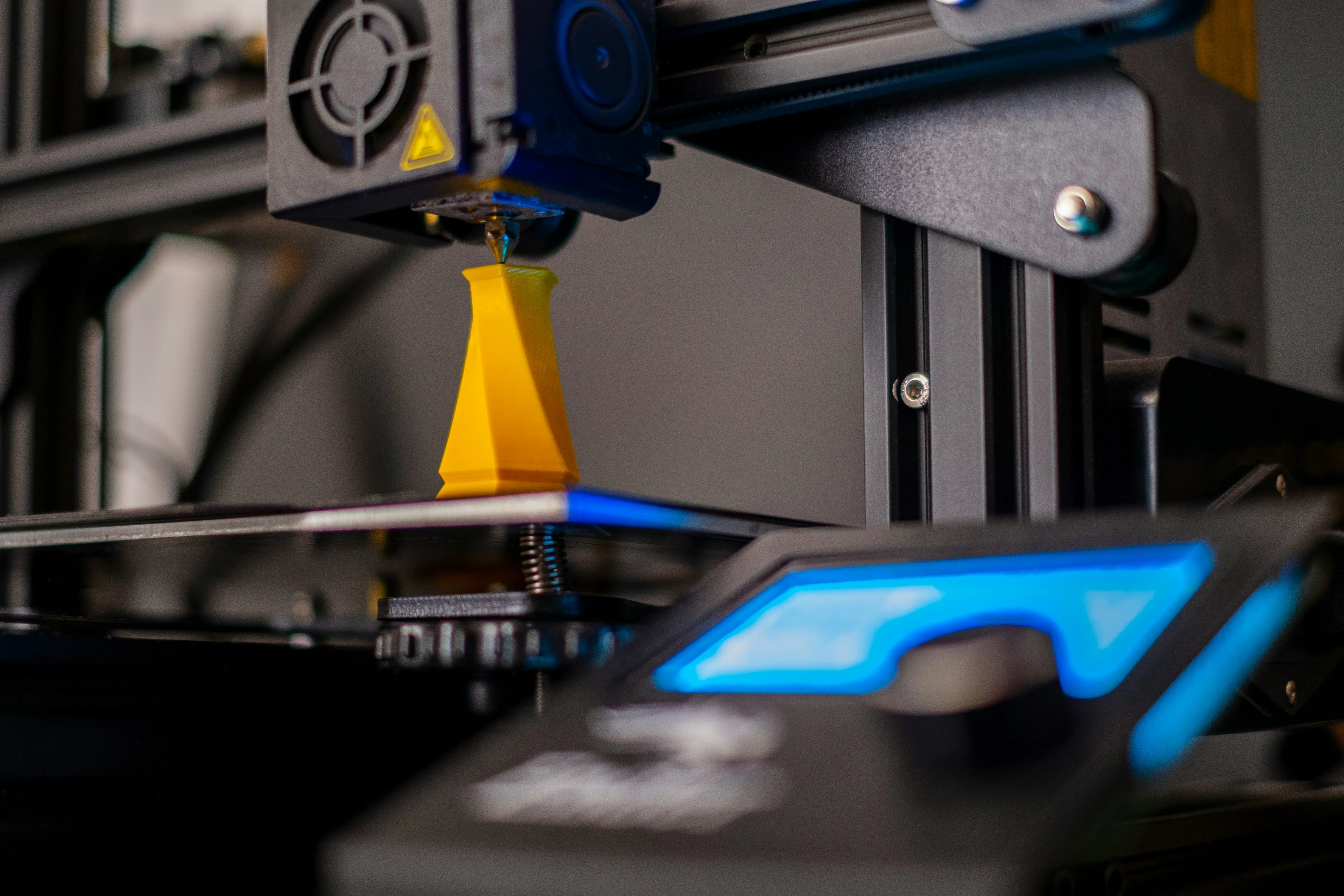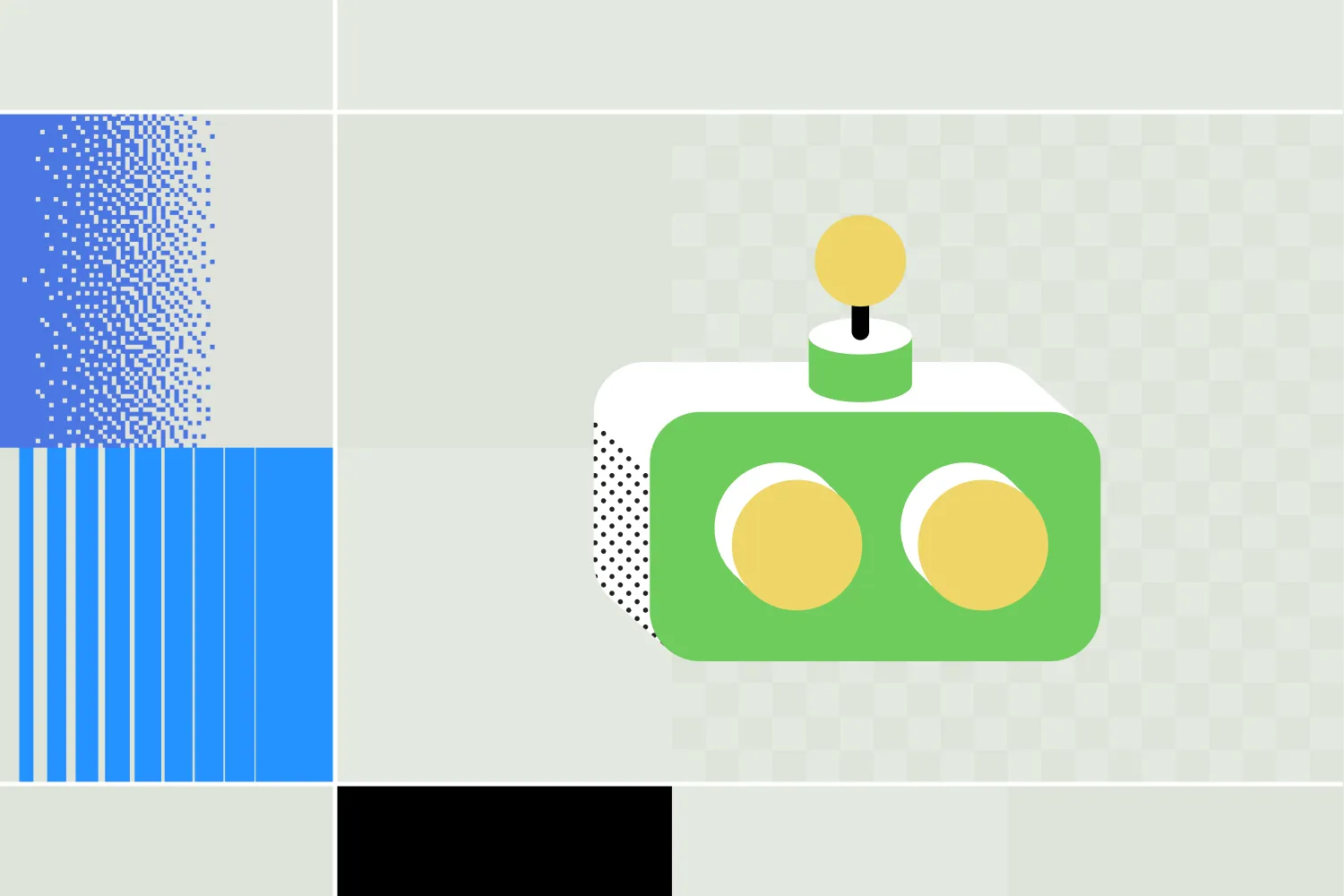- Tác nhân AI có thể đơn giản chỉ phản ứng với đầu vào hiện tại hoặc phức tạp hơn với khả năng lên kế hoạch, học hỏi và phối hợp các nhiệm vụ phức tạp trong nhiều lĩnh vực khác nhau.
- Tác nhân phản xạ đơn giản chỉ dựa vào điều kiện hiện tại, còn tác nhân phản xạ dựa trên mô hình sử dụng mô hình nội bộ để theo dõi và dự đoán sự thay đổi của môi trường, giúp quyết định tốt hơn.
- Hệ thống đa tác nhân gồm nhiều tác nhân AI phối hợp hoặc cạnh tranh với nhau, cho phép ứng dụng nâng cao như xe tự lái phối hợp giao thông hoặc quản lý chuỗi cung ứng phức tạp.
Tác nhân AI đã phát triển mạnh mẽ trong những năm gần đây. Với công nghệ và khả năng ngày càng phức tạp, hiện nay có rất nhiều loại tác nhân AI khác nhau.
Tác nhân AI là phần mềm thực hiện các nhiệm vụ. Khác với chatbot thông thường, nó có thể thực hiện hành động thay cho người dùng.
Có rất nhiều loại tác nhân AI, từ nhiệt kế thông minh, xe tự lái đến các tác nhân có giao diện trò chuyện. Tất cả các trường hợp sử dụng này đều thuộc một trong bảy loại tác nhân AI chính. Trong bài viết này, tôi sẽ chia sẻ 7 loại tác nhân AI chính và một số ví dụ thực tế về tác nhân AI.
1. Tác Nhân Phản Xạ Đơn Giản
Tác nhân phản xạ đơn giản là hệ thống AI đưa ra quyết định chỉ dựa trên đầu vào hiện tại từ môi trường.
Nó sử dụng tập hợp các quy tắc điều kiện-hành động để liên kết đầu vào quan sát được với phản hồi cụ thể. Khi nó phát hiện trạng thái nhất định trong môi trường, nó sẽ thực hiện quy tắc tương ứng.
Nó không có bộ nhớ hay mô hình nội bộ về thế giới — vì vậy chỉ hoạt động hiệu quả trong môi trường có thể quan sát hoàn toàn, nơi mọi quyết định đều dựa vào đầu vào hiện tại.
Ví Dụ về Tác Nhân Phản Xạ Đơn Giản
- Nhiệt kế tự động bật máy sưởi khi trời quá lạnh
- Robot đổi hướng khi va vào tường (xin chào, Roomba có mèo ngồi trên)
- Một chatbot cơ bản trả lời “Xin chào!” khi người dùng nói “Hi”
.webp)
2. Tác Nhân Phản Xạ Dựa Trên Mô Hình
Tác nhân phản xạ dựa trên mô hình là tác nhân AI đưa ra quyết định dựa trên cả đầu vào hiện tại và mô hình nội bộ về thế giới.
Khác với tác nhân phản xạ đơn giản, loại này theo dõi trạng thái môi trường theo thời gian. Nó sử dụng mô hình — tức là thông tin lưu trữ về cách thế giới vận hành — để bù đắp khi môi trường không thể quan sát hoàn toàn.
Khi nhận đầu vào mới, nó cập nhật trạng thái nội bộ, tham khảo các quy tắc điều kiện-hành động và chọn phản hồi tốt nhất dựa trên cả nhận thức hiện tại và kiến thức từ các lần tương tác trước.
Ví Dụ về Tác Nhân Phản Xạ Dựa Trên Mô Hình
- Robot hút bụi nhớ sơ đồ phòng và tránh những khu vực đã dọn dẹp
- Tác nhân LLM tiếp tục cuộc trò chuyện đồng thời ghi nhớ các đầu vào trước của người dùng
- AI trong trò chơi không chỉ phản ứng với những gì nhìn thấy mà còn dựa vào thông tin từ các lượt trước đó

3. Tác Nhân Học Hỏi
Tác nhân học hỏi là tác nhân AI cải thiện hiệu suất theo thời gian bằng cách học từ kinh nghiệm.
Nó gồm bốn thành phần chính: phần tử học, phần tử thực hiện, bộ đánh giá và bộ tạo vấn đề.
Phần tử thực hiện chọn hành động, phần tử học điều chỉnh hành vi dựa trên phản hồi. Bộ đánh giá đánh giá kết quả dựa trên tiêu chuẩn định sẵn, còn bộ tạo vấn đề đề xuất hành động mới để học hiệu quả hơn.
Cấu trúc này giúp tác nhân thích nghi với thay đổi, hoàn thiện chiến lược và hoạt động hiệu quả ngay cả trong môi trường lạ.
Ví Dụ về Tác Nhân Học Hỏi
- Tác nhân AI giao dịch tiền mã hóa điều chỉnh chiến lược dựa trên hiệu suất thị trường
- Công cụ đề xuất sản phẩm ngày càng chính xác nhờ học từ hành vi người dùng
- Chatbot chăm sóc sức khỏe học từ tương tác với bệnh nhân để cải thiện độ chính xác phân loại

4. Tác Nhân Dựa Trên Lợi Ích
Tác nhân dựa trên lợi ích là tác nhân AI chọn hành động dựa trên kết quả nào được dự đoán sẽ mang lại giá trị tổng thể cao nhất hoặc “lợi ích”.
Thay vì chỉ nhắm đến mục tiêu, tác nhân này đánh giá các kết quả có thể xảy ra và chọn phương án tối đa hóa hàm lợi ích đã xác định.
Nhờ vậy, nó có thể xử lý các tình huống có nhiều cách đạt mục tiêu hoặc cần cân nhắc đánh đổi. Nó cần khả năng so sánh lựa chọn, dự đoán hậu quả và xếp hạng kết quả theo ưu tiên.
Ví Dụ về Tác Nhân Dựa Trên Lợi Ích
- Chatbot bán hàng ưu tiên khách tiềm năng dựa trên khả năng chuyển đổi
- Bot giao dịch chứng khoán cân bằng rủi ro và lợi nhuận để tối đa hóa lợi ích lâu dài
- Chatbot doanh nghiệp sắp xếp lịch họp để giảm xung đột và tăng sự thuận tiện
5. Tác Nhân Phân Cấp
Tác nhân phân cấp là tác nhân AI tổ chức quá trình ra quyết định thành nhiều tầng hoặc cấp độ, trong đó cấp cao xử lý mục tiêu tổng quát, cấp thấp quản lý hành động cụ thể.
Tác nhân này chia nhỏ nhiệm vụ phức tạp thành các nhiệm vụ con, mỗi cấp độ phụ trách một phạm vi quyết định khác nhau.
Tầng cao có thể lên kế hoạch dài hạn, tầng thấp xử lý dữ liệu cảm biến và phản ứng thời gian thực. Các tầng trao đổi thông tin giúp phối hợp mục tiêu tổng thể với thực thi chi tiết.
Cấu trúc này giúp quản lý sự phức tạp và mở rộng hành vi theo thời gian hoặc ưu tiên khác nhau.
Ví Dụ về Tác Nhân Phân Cấp
- Trong sản xuất, tác nhân cấp cao lên kế hoạch lắp ráp, còn các cấp thấp điều khiển cánh tay robot và thời gian vận hành
- Trong nhà máy thông minh, các tầng khác nhau quản lý lịch sản xuất, phối hợp máy móc và vận hành thực tế

6. Tác Nhân Dựa Trên Mục Tiêu
Tác nhân dựa trên mục tiêu là tác nhân AI đưa ra quyết định bằng cách đánh giá hành động nào sẽ giúp đạt được mục tiêu cụ thể.
Tác nhân được giao một hoặc nhiều mục tiêu — tức là kết quả mong muốn. Nó sử dụng thuật toán tìm kiếm hoặc lập kế hoạch để xem xét các chuỗi hành động có thể, rồi chọn phương án có khả năng đạt mục tiêu cao nhất.
Khác với tác nhân phản xạ, nó không chỉ phản ứng mà còn suy luận về hậu quả tương lai trước khi hành động. Điều này giúp nó linh hoạt hơn trong môi trường động hoặc lạ, nhưng cũng đòi hỏi nhiều tài nguyên tính toán hơn.
Ví Dụ về Tác Nhân Dựa Trên Mục Tiêu
- Hệ thống định vị tính toán lộ trình tối ưu đến điểm đến
- AI giải đố tìm kiếm nước đi dẫn đến hoàn thành trò chơi
- Cánh tay robot lên kế hoạch chuỗi chuyển động để lắp ráp sản phẩm thành công
7. Hệ Thống Đa Tác Nhân (MAS)
Cuối cùng nhưng không kém phần quan trọng: hệ thống đa tác nhân.
Hệ thống đa tác nhân (MAS) là hệ thống gồm nhiều tác nhân AI tương tác, phối hợp (hoặc đôi khi cạnh tranh) để hoàn thành mục tiêu riêng lẻ hoặc chung.
Mỗi tác nhân trong hệ thống hoạt động độc lập, với khả năng, mục tiêu và nhận thức môi trường riêng.
Các tác nhân này giao tiếp và phối hợp — trực tiếp qua tin nhắn hoặc gián tiếp bằng cách quan sát thay đổi môi trường. Toàn hệ thống có thể giải quyết những vấn đề quá phức tạp hoặc phân tán để một tác nhân đơn lẻ xử lý.
Hệ thống đa tác nhân có thể hợp tác, cạnh tranh hoặc kết hợp cả hai, tùy vào thiết kế và mục tiêu.
Ví dụ về Hệ thống Đa tác nhân
- Xe tự lái phối hợp tại giao lộ để tránh va chạm
- Một nhóm bot tài chính quản lý hóa đơn, phát hiện gian lận và báo cáo thông qua tự động hóa quy trình AI
- Một hệ thống chuỗi cung ứng nơi các tác nhân khác nhau quản lý tồn kho, vận chuyển và dự báo nhu cầu

Xây dựng tác nhân AI tùy chỉnh
Việc xây dựng một tác nhân AI tùy chỉnh không khó – và bạn có thể thực hiện miễn phí.
Botpress cung cấp trình xây dựng luồng trực quan kéo-thả, bảo mật cấp doanh nghiệp, thư viện tài liệu phong phú và cộng đồng Discord năng động với hơn 20.000 nhà phát triển bot.
Nền tảng mở rộng của chúng tôi cho phép bạn xây dựng bất kỳ chatbot tùy chỉnh nào với bất kỳ tích hợp nào — và Integration Hub của chúng tôi có sẵn nhiều kết nối dựng sẵn với các kênh lớn nhất.
Bắt đầu xây dựng ngay hôm nay. Miễn phí.
Câu hỏi thường gặp
7 loại tác nhân AI là gì?
7 loại gồm: tác nhân phản xạ đơn giản, tác nhân phản xạ dựa trên mô hình, tác nhân dựa trên mục tiêu, tác nhân dựa trên tiện ích, tác nhân học tập, tác nhân phân cấp và hệ thống đa tác nhân.
ChatGPT có phải là một tác nhân AI không?
Có, ChatGPT có thể được xem là một tác nhân AI — nó nhận đầu vào, xử lý và tạo ra phản hồi, thường sử dụng cách tiếp cận dựa trên mục tiêu hoặc tiện ích tùy theo cách triển khai.
Đặc vụ thông minh là gì và chúng hoạt động như thế nào trong môi trường số?
Tác nhân thông minh là những thực thể được thiết kế để hoạt động trong các môi trường số khác nhau. Chúng thu thập thông tin từ môi trường xung quanh, đánh giá tình huống hiện tại và thực hiện hành động để đạt được mục tiêu đã định. Hiệu suất của chúng bị ảnh hưởng bởi các hành động bên ngoài mà chúng thực hiện trong môi trường có thể quan sát được.
Trí tuệ nhân tạo đóng vai trò gì trong chức năng của đặc vụ thông minh?
Trí tuệ nhân tạo cung cấp cho các tác nhân thông minh khả năng học hỏi, suy luận và thích nghi. Các tác nhân sử dụng AI để nâng cao nền tảng kiến thức, giúp đưa ra quyết định tinh vi hơn trong nhiều môi trường khác nhau.
Kiến thức nền tảng của đặc vụ thông minh bao gồm những gì?
Kiến thức của tác nhân thông minh bao gồm thông tin về môi trường, các quy tắc định sẵn và hiểu biết cơ bản về tình huống hiện tại. Kiến thức này là nền tảng cho quá trình ra quyết định của chúng.
Yếu tố hiệu suất là gì trong bối cảnh đặc vụ thông minh?
Yếu tố hiệu suất của tác nhân thông minh là khả năng đạt được mục tiêu và đưa ra quyết định tối ưu hóa hành động trong một môi trường nhất định. Đây là thành phần quan trọng quyết định hiệu quả và năng suất của tác nhân.
Các đặc vụ có thể hoạt động theo cấu trúc phân cấp không?
Có, tác nhân phân cấp là một loại tác nhân thông minh hoạt động theo các cấp độ có cấu trúc. Tác nhân cấp cao chịu trách nhiệm ra quyết định tổng thể, trong khi các tác nhân cấp thấp xử lý các nhiệm vụ cụ thể trong khuôn khổ chung. Cấu trúc phân cấp này giúp vận hành hiệu quả trong môi trường phức tạp.
Đặc vụ thông minh có hoạt động với trí thông minh giới hạn không?
Có, nhiều tác nhân thông minh hoạt động với trí thông minh giới hạn, nghĩa là chúng có phạm vi kiến thức và khả năng nhất định. Sự giới hạn này giúp chúng tập trung vào các nhiệm vụ và môi trường cụ thể nơi chuyên môn của chúng phù hợp nhất.





.webp)

